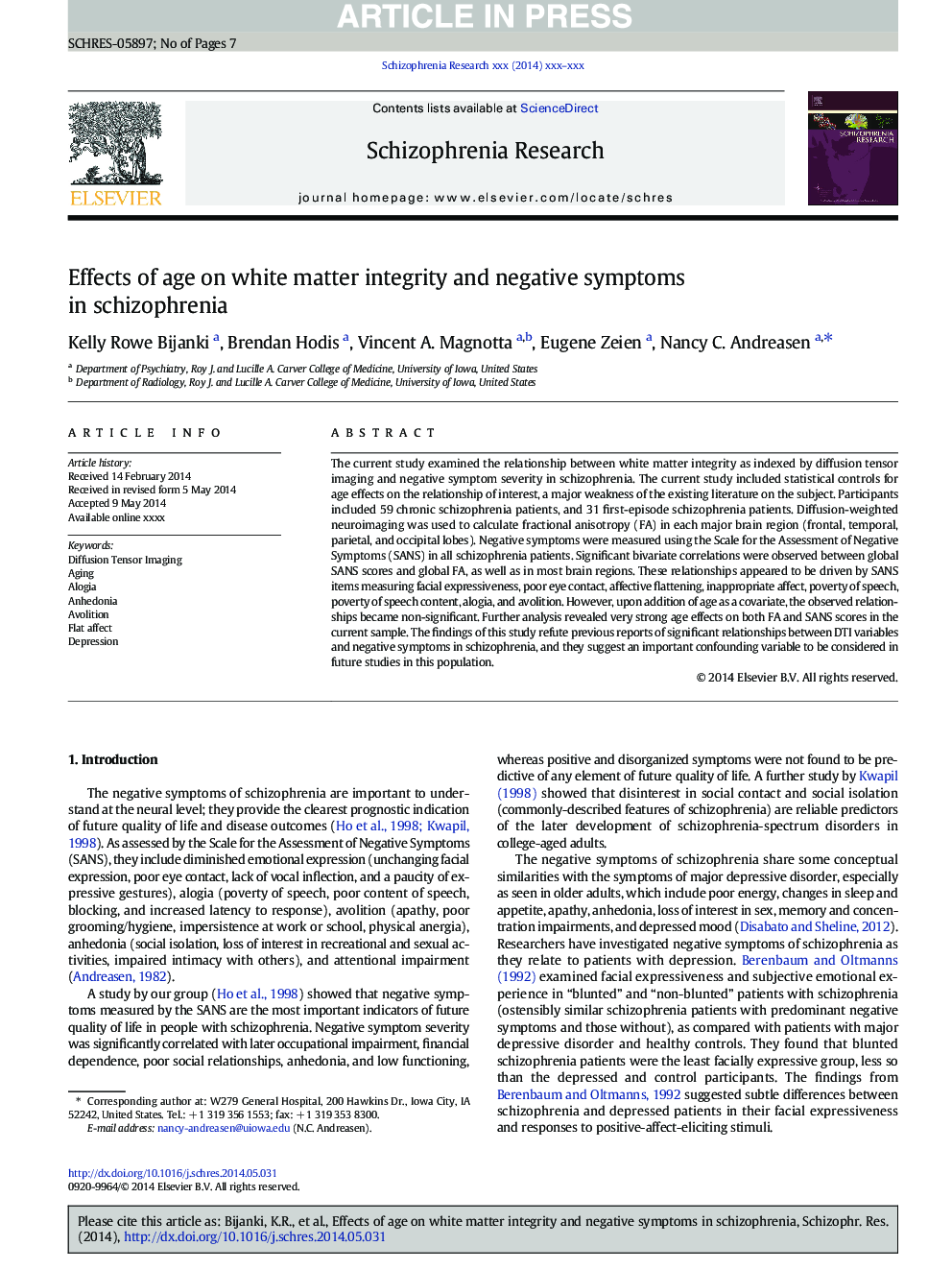| Article ID | Journal | Published Year | Pages | File Type |
|---|---|---|---|---|
| 10307413 | Schizophrenia Research | 2015 | 7 Pages |
Abstract
The current study examined the relationship between white matter integrity as indexed by diffusion tensor imaging and negative symptom severity in schizophrenia. The current study included statistical controls for age effects on the relationship of interest, a major weakness of the existing literature on the subject. Participants included 59 chronic schizophrenia patients, and 31 first-episode schizophrenia patients. Diffusion-weighted neuroimaging was used to calculate fractional anisotropy (FA) in each major brain region (frontal, temporal, parietal, and occipital lobes). Negative symptoms were measured using the Scale for the Assessment of Negative Symptoms (SANS) in all schizophrenia patients. Significant bivariate correlations were observed between global SANS scores and global FA, as well as in most brain regions. These relationships appeared to be driven by SANS items measuring facial expressiveness, poor eye contact, affective flattening, inappropriate affect, poverty of speech, poverty of speech content, alogia, and avolition. However, upon addition of age as a covariate, the observed relationships became non-significant. Further analysis revealed very strong age effects on both FA and SANS scores in the current sample. The findings of this study refute previous reports of significant relationships between DTI variables and negative symptoms in schizophrenia, and they suggest an important confounding variable to be considered in future studies in this population.
Related Topics
Life Sciences
Neuroscience
Behavioral Neuroscience
Authors
Kelly Rowe Bijanki, Brendan Hodis, Vincent A. Magnotta, Eugene Zeien, Nancy C. Andreasen,
